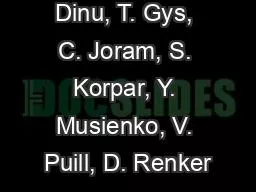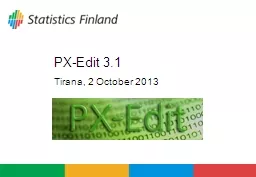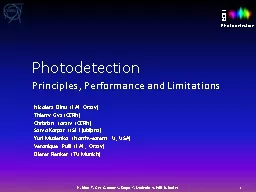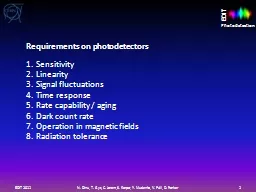PPT-EDIT 2011 N. Dinu, T. Gys, C. Joram, S. Korpar, Y. Musienko, V. Puill, D. Renker
Author : nephewhers | Published Date : 2020-07-02
1 Photodetection Principles Performance and Limitations Nicoleta Dinu LAL Orsay Thierry Gys CERN Christian Joram CERN Samo Korpar JSI Ljubljana Yuri Musienko Northwestern
Presentation Embed Code
Download Presentation
Download Presentation The PPT/PDF document "EDIT 2011 N. Dinu, T. Gys, C. Joram, S. ..." is the property of its rightful owner. Permission is granted to download and print the materials on this website for personal, non-commercial use only, and to display it on your personal computer provided you do not modify the materials and that you retain all copyright notices contained in the materials. By downloading content from our website, you accept the terms of this agreement.
EDIT 2011 N. Dinu, T. Gys, C. Joram, S. Korpar, Y. Musienko, V. Puill, D. Renker: Transcript
Download Rules Of Document
"EDIT 2011 N. Dinu, T. Gys, C. Joram, S. Korpar, Y. Musienko, V. Puill, D. Renker"The content belongs to its owner. You may download and print it for personal use, without modification, and keep all copyright notices. By downloading, you agree to these terms.
Related Documents














